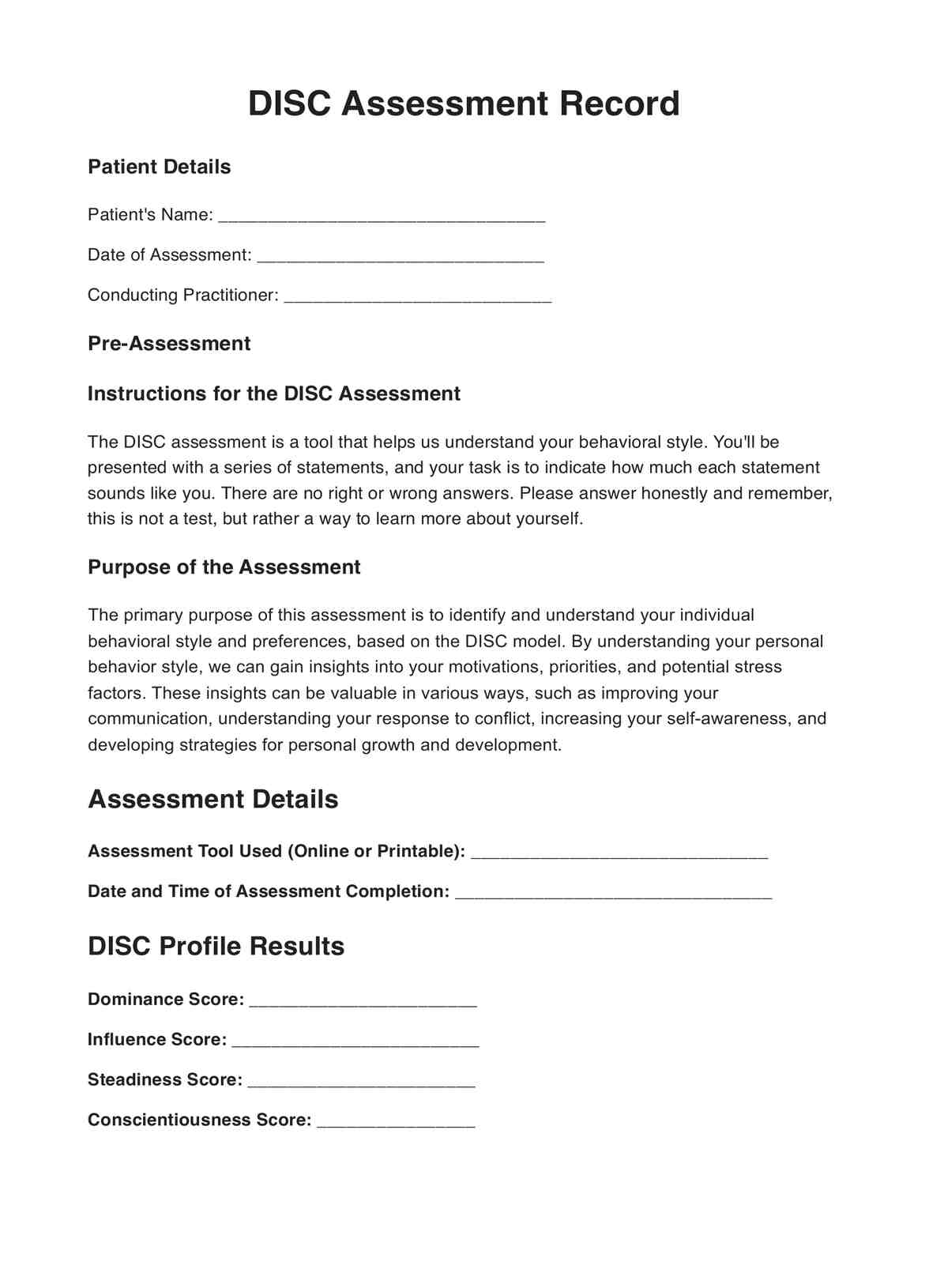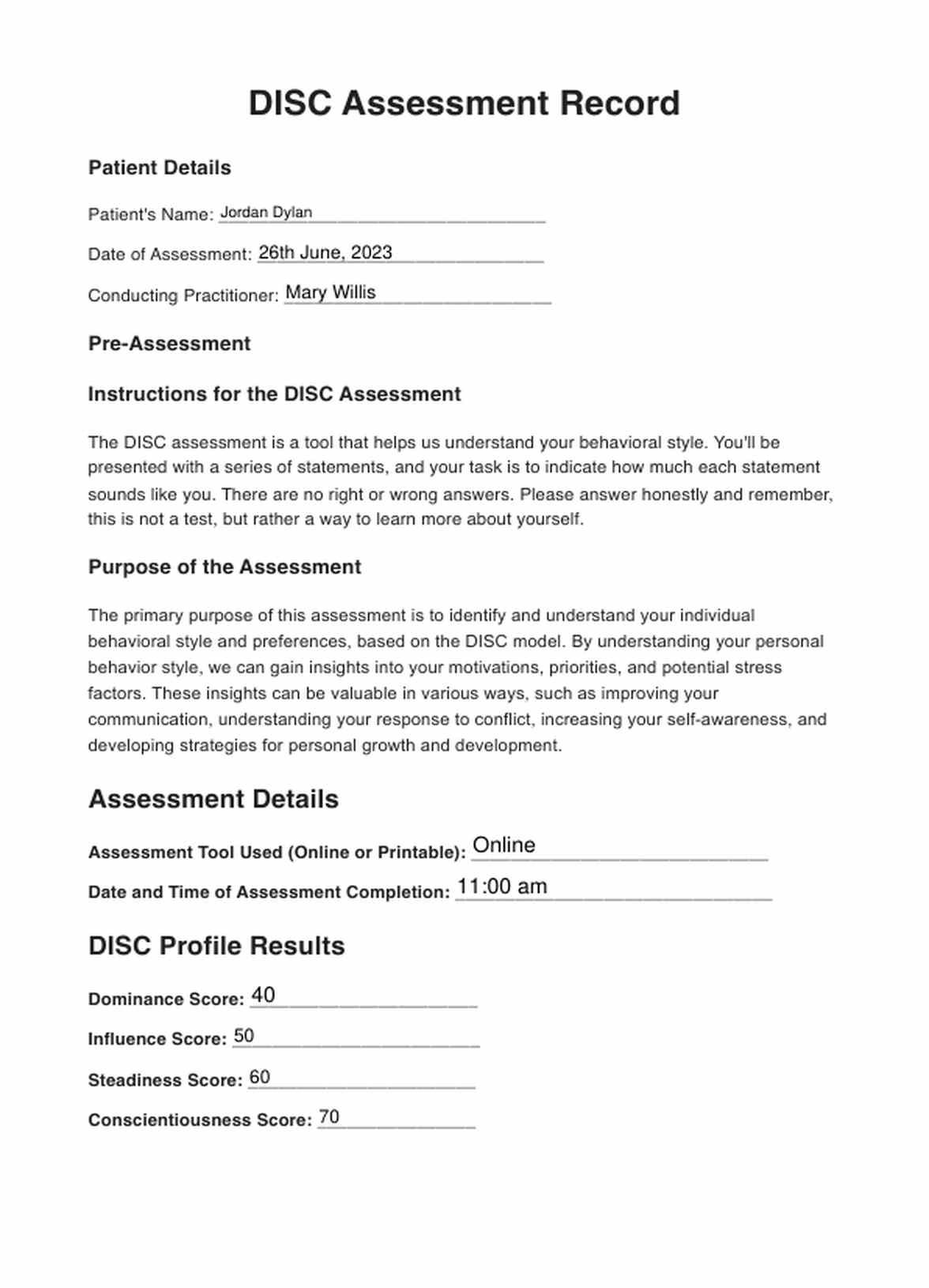-p-500.jpg)
Learn about DISC assessments, their types, meanings, and how to use them for free. Download our free PDF for a practical example.
-p-500.jpg)
By Telita Montales on Jul 25, 2024.


A DiSC Assessment is a widely used personality profiling tool that helps individuals gain insight into their behavioral tendencies and communication styles. Based on the work of psychologist William Moulton Marston, the DISC model categorizes four primary personality traits into four main types: dominance (D), influence (I), steadiness (S), and conscientiousness (C).
Using a lowercase 'i' in DiSC is one way to distinguish Everything DiSC® and DiSC® Classic from other DiSC Assessments. The DISC personality model categorizes behavior into four primary personality types:
While DiSC Assessments can be incredibly useful, it's crucial to remember that they are just one tool in the broader context of personal growth and team development. For the best results, they should be used in conjunction with other forms of feedback and personal development strategies.
Through this explainer video, you can have a visual overview of the DiSC Assessment:
PDF Template Example PDF

This DiSC Assessment questionnaire is valuable for practitioners exploring a client's personality profile or DiSC style. However, the test is a trademarked product of Personality Profile Solutions, LLC, available exclusively through Discprofile.com and requires a paid subscription to access. Instead, we will provide you with a DiSC Assessment record sheet to record results and provide additional details about action and follow-up plans for clients. The following steps can serve as a guide on how to use this:
First, you must obtain our free DiSC Assessment record sheet. You can download a copy of it through the link on this page or access it through Carepatron's templates library.
Provide the DiSC Assessment to your client. Depending on the chosen tool, this can be done online or via paper forms. The assessment typically takes 10-15 minutes to complete and consists of items about behavioral preferences. Provide the instructions and reassure them that there are no right or wrong answers, only their personal preference and perspectives about themselves.
Once completed, the assessment is scored to determine your client's DISC personality traits. Take time to analyze these results thoroughly. Look for patterns, dominant traits, and potential areas for development. Consider how each profile might influence workplace interactions and patient care.
Jot down the results using our record sheet. Schedule a time to review the results with the client. Explain the different DISC styles and help them understand their personality type. Work with clients to develop action plans, including strategies for practicing self-awareness, adapting communication styles, or improving social interactions.
The questionnaire typically consists of a series of statements or words in common language that describe behaviors in specific settings, such as the workplace. Participants are asked to mark the statements that most accurately reflect their behavior, especially under pressure. The questionnaire comprises questions, each corresponding to a particular DISC style.
The number of marks in each section is recorded to score the assessment. This provides a numerical representation of how strongly each style is expressed in the individual's behavior.
The interpretation of DiSC Assessment results involves analyzing the relative strengths of each style within an individual's profile. Key points to consider during interpretation include:
When interpreting results, it's essential to avoid overgeneralization. The assessment provides insights into tendencies, not fixed traits. They should be used as a starting point for discussion and self-reflection, not as definitive labels.
Another resource based on the DISC model is a DISC personality types chart. While everyone is a mixture of each style, most people tend to fall into one or two main style quadrants. Each type has unique characteristics; for example, dominant people are confident and assertive, while influential people are outgoing and social. Moreover, steady individuals are calm and reliable, and conscientious individuals are detail-oriented and careful.
A chart visually represents an individual's personality type and is used in various settings to improve team communication, increase productivity, and reduce stress. Understanding these styles can help individuals improve communication, teamwork, and overall performance.